o install 3/8 inset self-closing cabinet hinges, follow these two steps: First, carefully measure and mark the placement of the hinges on the cabinet door and the cabinet frame. Then use a drill to create pilot holes and attach the hinges using screws.
Installing 3/8 inset self-closing cabinet hinges is a straightforward process that can greatly improve the functionality and aesthetics of your cabinets. These hinges ensure that your cabinet doors close smoothly and securely, without the need for manual intervention. In this guide, we will provide you with step-by-step instructions on how to install these hinges effectively.
By following these instructions, you will be able to easily transform your cabinets and enjoy the convenience of self-closing doors. So, let’s get started and learn how to install 3/8 inset self-closing cabinet hinges with ease.
Understanding 3/8 Inset Self Closing Cabinet Hinges
Learn the Basics of 3/8 Inset Self Closing Cabinet Hinges
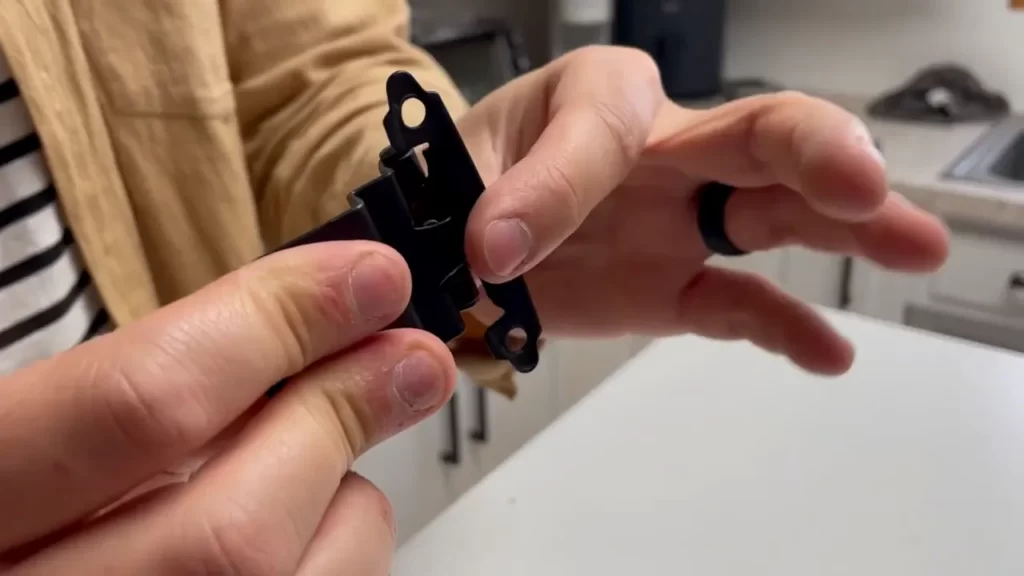
Understanding 3/8 inset self closing cabinet hinges is essential if you’re looking to give your cabinets a sleek and seamless finish. These hinges are designed to allow your cabinet doors to close softly and automatically, ensuring a noiseless and hassle-free operation.
So, what exactly does “3/8 inset” mean? Well, when it comes to cabinet hinges, “inset” refers to how the door sits within the cabinet frame. In the case of 3/8 inset hinges, it means that the cabinet door is positioned 3/8 of an inch inside the cabinet frame, resulting in a clean and flush appearance.
Installing 3/8 inset self closing cabinet hinges requires a bit of skill and attention to detail, but it’s definitely a project that you can tackle on your own. To help you get started, here are some key steps to follow:
Explore the Benefits of Using These Hinges in Your Cabinets
There are several advantages to using 3/8 inset self closing cabinet hinges in your cabinets. These hinges not only enhance the aesthetic appeal of your cabinets but also provide functional benefits that make your everyday life easier. Here are some of the benefits:
- Smooth and Quiet Operation: The self closing mechanism ensures that your cabinet doors close gently and quietly, eliminating any unnecessary banging or slamming. This feature is especially useful if you have young children or live in a small space where noise can be disruptive.
- Space-saving Design: The 3/8 inset style hinges help maximize the available space inside your cabinets. By positioning the door inside the frame, you can save valuable inches that would otherwise be occupied by a protruding door.
- Effortless Accessibility: With self closing hinges, you don’t need to worry about manually closing cabinet doors. This makes accessing the contents of your cabinets quick and convenient, especially when you have your hands full in the kitchen.
- Professional Look: The flush and seamless appearance created by 3/8 inset self closing hinges adds a touch of sophistication to your cabinets. Whether you have a modern or traditional kitchen design, these hinges contribute to a polished and cohesive look.
By installing 3/8 inset self closing cabinet hinges in your cabinets, you can elevate both the functionality and visual appeal of your space. With their smooth operation and sleek design, these hinges are a worthwhile investment that will enhance your overall cabinet experience.
Tools And Materials Needed
When it comes to installing 3/8 inset self closing cabinet hinges, having the right tools and materials is crucial. This will ensure that the installation process goes smoothly and that you achieve the desired results. In this section, we will discuss the tools and materials required for this task, as well as provide tips for choosing the right ones.
List of tools and materials required for installing 3/8 inset self closing cabinet hinges
- Screwdriver: A reliable screwdriver is essential for loosening and tightening screws during the installation process. Make sure to choose a screwdriver with the appropriate head size for the screws provided with the hinges.
- Drill: If your cabinets do not have pre-drilled holes for the hinges, a drill will be necessary to create these holes. Ensure that you have the appropriate drill bits for the size of the screws provided.
- Measuring tape: Accurate measurements are crucial for ensuring that the hinges are installed in the correct position. A measuring tape will help you measure the distances accurately.
- Pencil: A pencil will allow you to mark the positions where the hinges will be installed, ensuring that they are aligned properly.
- Level: To ensure that the hinges are installed straight and level, a level is essential. This will help you achieve a clean and professional-looking installation.
- Masking tape: Masking tape can be used to mark the positions of the hinges and prevent any potential damage to the cabinet surface during the installation process.
- Hinges: of course, you will need the 3/8 inset self closing cabinet hinges themselves. Make sure to choose hinges that are suitable for your cabinet doors.
- Screws: The hinges will come with screws for installation. Make sure to check that the screws provided are the appropriate length for your cabinet doors.
Tips for choosing the right tools and materials
Choosing the right tools and materials for installing 3/8 inset self closing cabinet hinges can make a significant difference in the quality and durability of the installation. Here are some tips to help you make the right choices:
- Quality matters: Invest in high-quality tools and materials that are built to last. This will ensure that your hinges are securely installed and will withstand regular use without any issues.
- Consider the cabinet material: Different cabinet materials may require specific tools or screws for installation. For example, if your cabinets are made of particleboard, you may need specialized screws to ensure a secure installation.
- Match the style: Choose hinges and screws that complement the style of your cabinet doors. This will enhance the overall visual appeal of your cabinets and give them a cohesive look.
- Measure twice, cut once: Double-check your measurements before purchasing or cutting any materials. This will help you avoid costly mistakes and ensure a precise installation.
- Read reviews: Before purchasing any tools or materials, take the time to read reviews from other customers. This will give you valuable insights into the quality and performance of the products you are considering.
Preparing The Cabinets
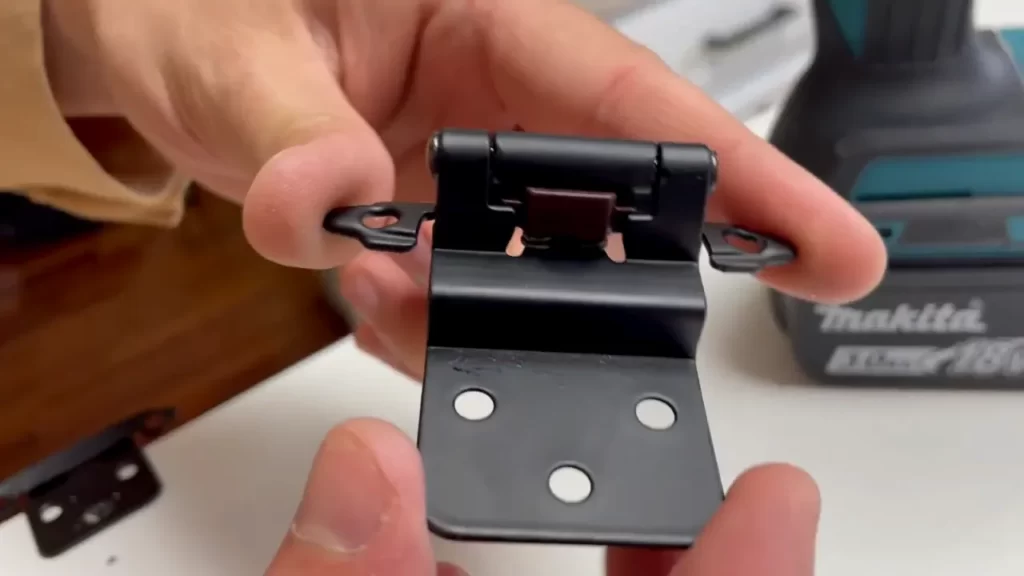
Preparing the Cabinets Assess the cabinet doors and determine the best placement for the hinges Before you begin the installation process for 3/8 inch inset self-closing cabinet hinges, it’s important to assess your cabinet doors to determine the best placement for the hinges. This step is crucial as it ensures optimal functionality and proper door alignment. Start by examining each cabinet door individually, taking note of any existing hardware or obstructions that may impact the hinge placement. To determine the best placement for the hinges, open the cabinet door fully and assess its current position in relation to the cabinet frame. Ideally, you want the door to sit flush with the frame when closed and evenly aligned with the adjacent doors when multiple doors are involved. It’s important to ensure that there is enough space between the hinges and the edges of the door for proper functionality. How to measure and mark the locations for the hinges Once you have assessed the cabinet doors and determined the ideal placement for the hinges, it’s time to measure and mark the locations. This step ensures precision and consistency throughout the installation process. To do this, you will need a measuring tape, a pencil, and a straightedge. First, measure the distance between the top and bottom of the cabinet door, making a mark in the center. This mark will serve as the reference point for the hinge placement. From this center mark, measure and mark the desired distance for the top and bottom hinges. Ensure that the distance is the same for both hinges to maintain symmetry. Next, use a straightedge to draw a horizontal line connecting the top and bottom hinge marks. This line will serve as a guide for aligning the hinges during installation. Repeat this process for each cabinet door, ensuring consistent measurements and markings throughout. Pre-drilling holes for the hinges Pre-drilling holes for the hinges is an essential step to ensure a secure and sturdy installation. This step minimizes the risk of splitting the wood and allows for easier insertion of the screws. To pre-drill the holes, you will need a drill, an appropriate-sized drill bit for the hinge screws, and a depth stop collar. Start by selecting a drill bit that matches the size of the screws provided with the hinges. Attach the drill bit to the drill and adjust the depth stop collar to the desired depth, typically the length of the hinge screws. Place the hinge on the marked location and hold it firmly in place. Position the drill bit in the center of the screw hole on the hinge and begin drilling slowly and steadily. Repeat this process for each hinge, ensuring that the holes are drilled straight and at the correct depth. Take caution not to drill too deep, as it may affect the hinge’s stability. By pre-drilling the holes, you are setting a solid foundation for the hinges, ensuring a smooth and efficient installation process. Once the holes are drilled, you can proceed with attaching the hinges to the cabinet doors, bringing you one step closer to achieving a functional and aesthetically pleasing cabinet setup.
Installing The Cabinet Hinges
When it comes to cabinet hardware, 3/8 inset self closing hinges are a popular choice for their functionality and aesthetics. These hinges are designed to be installed on the inside of the cabinet door, allowing the door to sit flush with the cabinet frame. In this guide, we will walk you through the step-by-step process of installing 3/8 inset self closing cabinet hinges to ensure a secure and proper fit.
Step-by-step instructions for installing 3/8 inset self closing cabinet hinges
- Start by determining the ideal placement for the hinges on the cabinet door. Measure and mark the desired distance from the top and bottom edges of the door where the hinges will be positioned. Typically, hinges are placed 2 to 4 inches from these edges for optimal performance and appearance.
- Next, using a drill and a 3/32-inch drill bit, create pilot holes at the marked locations on the cabinet door. These pilot holes will help guide the screws during installation and prevent the wood from splitting. Ensure the drill bit is the appropriate size for the screws provided with your hinges.
- Now it’s time to secure the hinges to the cabinet door. Take one hinge and align it with the pilot holes on the door. Attach the hinge using the screws provided, making sure they are tight enough to securely hold the hinge in place but not so tight that they strip the wood.
- Repeat the previous step for the remaining hinges, ensuring they are installed at the same height and alignment for a consistent and professional look.
- Once all the hinges are attached to the door, it’s time to secure the hinges to the cabinet frame. Open the cabinet door and hold it in the desired position against the cabinet frame. Mark the locations where the hinges meet the frame, ensuring they are aligned properly.
- Using a drill bit that matches the size of the screws provided with your hinges, create pilot holes at the marked locations on the cabinet frame.
- Align each hinge with the pilot holes on the cabinet frame and attach them using the provided screws. Make sure the hinges are securely fastened to the frame, allowing the door to open and close smoothly without any wobbling.
- Finally, adjust the hinges for proper alignment. With the door closed, check for any gaps or misalignment between the door and the cabinet frame. If necessary, use a Phillips screwdriver to adjust the screws on the hinges. Turning the screws clockwise will move the door closer to the frame, while turning them counterclockwise will move the door away from the frame. Make small adjustments and test the door’s alignment until it sits flush and operates smoothly.
By following these step-by-step instructions, you can easily install 3/8 inset self closing cabinet hinges and achieve a professional and functional finish for your cabinets. Ensure each hinge is securely fastened to both the door and the cabinet frame, and don’t forget to adjust the hinges for proper alignment to ensure optimal performance.
Attaching The Cabinet Doors
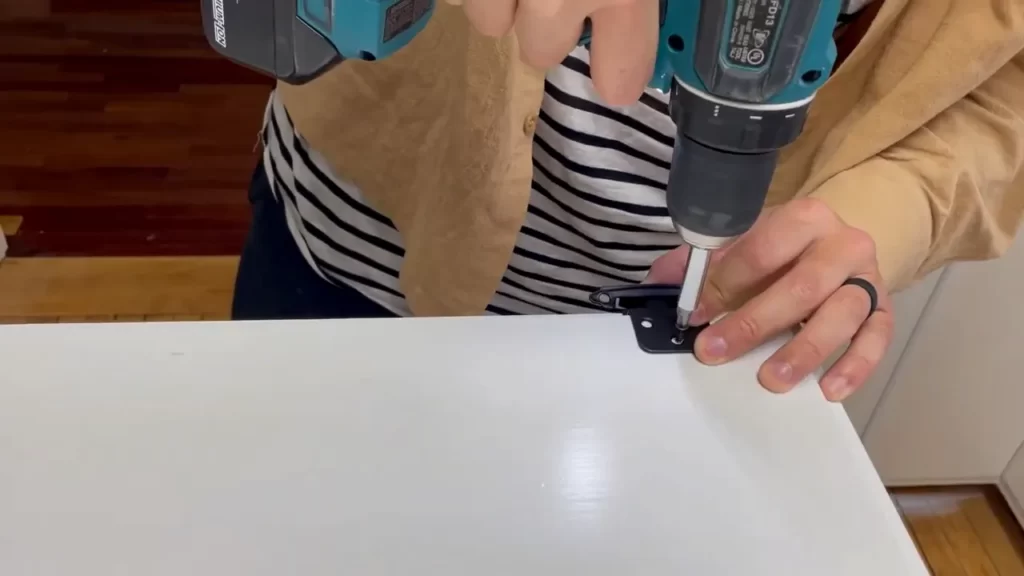
Attaching the cabinet doors is the final step in installing 3/8 inset self-closing cabinet hinges. This critical stage ensures that the doors are aligned correctly and function smoothly. In this section, we will guide you through the process step-by-step, ensuring a flawless installation.
Aligning the hinges with the cabinet doors
The first step in attaching the cabinet doors is aligning the hinges with the doors themselves. This ensures that the doors close properly and are flush with the cabinet frames. Here are the steps to follow:
- Measure and mark the location where the hinges will be mounted on the inside of the cabinet door. It is important to create a consistent and symmetrical layout for all the doors to maintain a professional look.
- Using a drill and a small drill bit, create pilot holes at the marked locations. These pilot holes will guide the screws, preventing the wood from splitting or cracking.
- Now, place the hinge plates on the inside of the cabinet door, aligning them with the pilot holes. Use a screwdriver or a drill to secure the hinges in place, making sure they are flush with the door surface.
- Repeat this process for each hinge and cabinet door, ensuring that the alignment is consistent to maintain a harmonious look.
Attaching the doors to the hinges
Once the hinges are aligned with the cabinet doors, it’s time to attach the doors to the hinges themselves. Follow these steps:
- Hold the cabinet door in front of the cabinet frame, aligning the hinges with the corresponding hinge plates mounted on the cabinet frame. Make sure the door is at the desired height and level.
- With the door held in place, mark the screw hole locations on the cabinet frame using a pencil or marker. This will help you guide the screws accurately.
- Remove the door and use a drill with an appropriate drill bit to create pilot holes on the marked locations. These pilot holes will prevent the wood from splitting when inserting the screws.
- Align the hinges with the pilot holes on the cabinet frame and secure them in place using a screwdriver or a drill. Make sure the screws go in straight and do not over-tighten them, as it may cause damage to the hinges or the door.
- Repeat this process for each door, ensuring they are all properly aligned and securely attached to the hinges.
Testing the functionality of the self-closing feature
With the doors attached to the hinges, it’s crucial to test the functionality of the self-closing feature. This step ensures that the doors close smoothly and stay securely shut. Follow these steps:
- Slowly open the cabinet doors and verify that they are aligned properly, closing evenly and without any obstructions.
- Release the doors and observe if they close automatically. The self-closing hinges should smoothly guide the doors back into the closed position.
- Check each door individually and ensure that they close securely, without any gaps or misalignments.
- If any issues are detected, such as doors not closing properly or misalignments, inspect the hinges for any loose screws or looseness. Make any necessary adjustments or tighten the screws as needed to resolve the issue.
By following these steps, you can confidently attach your cabinet doors, ensuring a perfect fit and proper functionality. Take the time to align the hinges accurately and test the self-closing feature to enjoy smooth and hassle-free operation for years to come.
Troubleshooting And Fine-Tuning
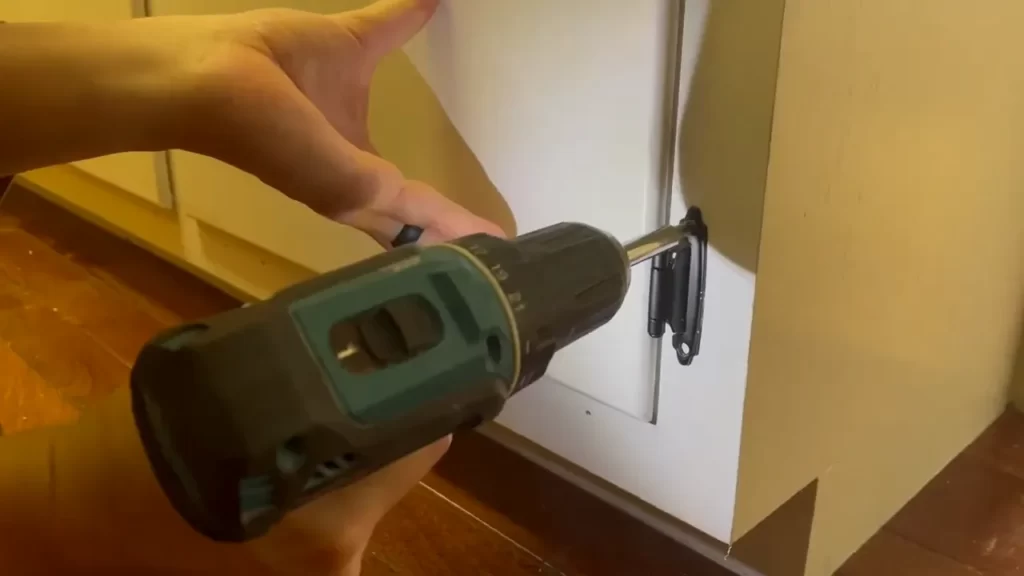
Once you have successfully installed 3/8 inset self closing cabinet hinges, you may still encounter some common issues during their operation. Fortunately, most of these problems are easy to fix with a little troubleshooting and fine-tuning. This section will guide you through the most common issues, how to fix them, and provide tips for smooth and quiet operation of your hinges.
Common issues with 3/8 inset self closing cabinet hinges and how to fix them
Despite being reliable and efficient, there are a few common issues that can occur with 3/8 inset self closing cabinet hinges. Understanding these issues and how to fix them can save you time and frustration.
1. Misalignment
Misalignment is a common problem that can affect the performance of your hinges. It can cause the cabinet doors to not close properly or to have an uneven appearance. To fix this issue, follow these steps:
- Check the alignment of the hinge cups and ensure they are positioned correctly.
- Tighten any loose screws that may be causing misalignment.
- Adjust the position of the mounting plate to align it with the hinge cup.
2. Door Slamming
If your cabinet doors are slamming shut instead of closing smoothly, you may need to adjust the tension of the self closing mechanism. Follow these steps to adjust the tension:
- Locate the tension adjustment screw on the hinge.
- Using a screwdriver, turn the screw clockwise to increase tension or counterclockwise to decrease tension.
- Test the door closing and adjust the tension as needed until the door closes smoothly without slamming shut.
Adjusting the tension of the self closing mechanism
The tension of the self closing mechanism plays a crucial role in the functionality of your cabinet hinges. By adjusting the tension, you can ensure that your doors close smoothly and securely. Here are some tips for adjusting the tension:
- Start by identifying the tension adjustment mechanism on your hinges. It is usually a screw or a small lever.
- Use a screwdriver or your fingers to turn the adjustment mechanism clockwise to increase tension or counterclockwise to decrease tension.
- Make small adjustments and test the door closing after each adjustment to achieve the desired tension.
- Remember to maintain a balance between strong enough tension to ensure the door stays closed and not too much tension that causes the door to slam shut.
Tips for ensuring smooth and quiet operation of the hinges
To maximize the performance and longevity of your 3/8 inset self closing cabinet hinges, follow these tips for smooth and quiet operation:
- Regularly clean and lubricate the hinges to remove any dirt or debris that can affect their smooth operation.
- Check for any loose screws and tighten them to ensure the hinges are secure.
- If you notice any hinges that are significantly louder or less smooth than others, try replacing them as they may be worn or damaged.
- Avoid slamming the cabinet doors as it can damage the hinges.
By troubleshooting common issues, adjusting the tension of the self closing mechanism, and following these tips, you can ensure that your 3/8 inset self closing cabinet hinges operate smoothly and quietly, providing functionality and convenience to your cabinets.
Maintenance And Care
Proper maintenance techniques for prolonging the lifespan of the hinges
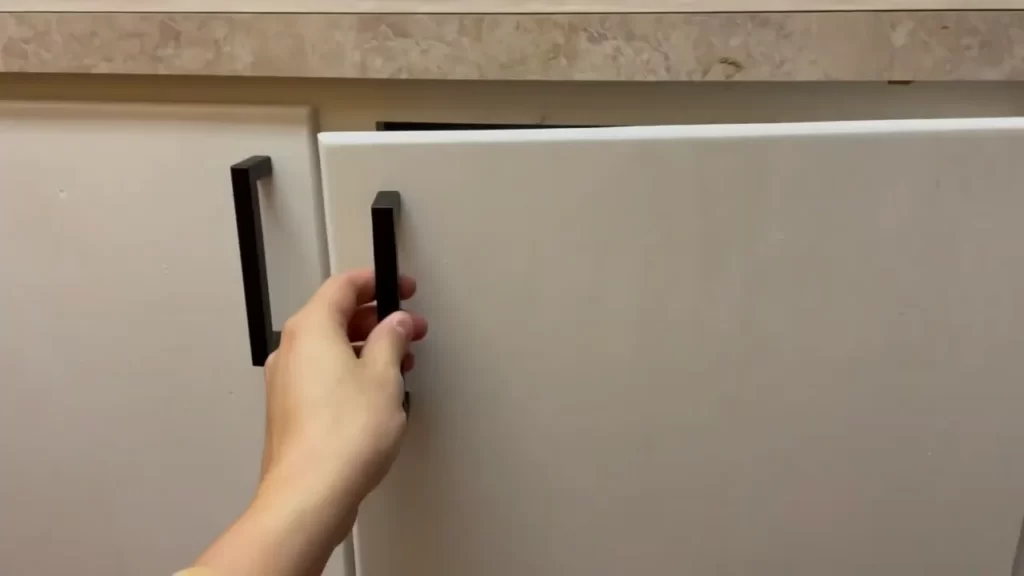
Proper maintenance is essential for keeping your 3/8 inset self-closing cabinet hinges in excellent working condition for years to come. By following a few simple techniques, you can ensure their functionality and prolong their lifespan. Here are some tips:
- Regular inspection: Take the time to inspect the hinges regularly for any signs of damage or wear. Look for loose screws, cracks, or any unusual noises when opening or closing the cabinet doors.
- Tighten loose screws: Use a screwdriver to tighten any loose screws immediately. Loose screws can cause misalignment and affect the smooth operation of the hinges.
- Keep the hinges clean: Dust and debris can accumulate in the hinge mechanism over time, leading to stiffness and poor performance. Clean the hinges regularly using a soft cloth or brush to remove any dirt or grime.
- Avoid excessive force: Be gentle when opening and closing cabinet doors. Applying excessive force can put unnecessary strain on the hinges, causing them to wear out faster.
- Check for proper alignment: Ensure that the cabinet doors are properly aligned with the hinges. If you notice any alignment issues, adjust the hinges accordingly to prevent uneven wear.
Cleaning and lubricating the hinges to prevent wear and tear
Regular cleaning and lubrication are crucial for preventing wear and tear on your 3/8 inset self-closing cabinet hinges. Here’s how you can keep them in top shape:
- Clean with mild detergent: Remove any dirt or grease buildup from the hinges by wiping them with a cloth dampened in a mild detergent solution. Avoid using harsh chemicals or abrasive cleaners that can damage the hinges.
- Dry thoroughly: After cleaning, make sure to dry the hinges completely to prevent moisture from causing rust or corrosion.
- Apply lubricant: Lubricate the hinge mechanism using a silicone-based or graphite lubricant. Apply a small amount to the moving parts of the hinges to ensure smooth operation.
- Wipe off excess lubricant: After applying the lubricant, wipe off any excess to prevent it from attracting dust and debris.
When to consider replacing the hinges
Despite proper maintenance, there may come a time when replacement becomes necessary. Here are some signs to look out for:
- Sagging cabinet doors: If you notice that your cabinet doors are sagging or not closing properly, it could indicate worn-out hinges.
- Excessive noise: Hinges that produce loud squeaking or grinding noises when opening or closing are likely nearing the end of their lifespan.
- Visible damage: Cracks, breaks, or bent metal on the hinges are clear signs that they need to be replaced.
- Frequent repairs: If you find yourself having to tighten or repair the hinges frequently, it may be more cost-effective to invest in new ones.
By following these maintenance and care techniques, you can ensure smooth and reliable operation from your 3/8 inset self-closing cabinet hinges. Regular inspections, cleaning, and lubricating will help prolong their lifespan, and knowing when to replace them will ensure that your cabinets continue to function optimally.
Frequently Asked Questions Of How To Install 3/8 Inset Self Closing Cabinet Hinges
How Do You Adjust 3 8 Inset Cabinet Hinges?
To adjust 3/8 inset cabinet hinges, start by removing the screw holding the hinge onto the cabinet. Then, adjust the hinge by turning the adjusting screw clockwise or counterclockwise to raise or lower the door. Test the door to ensure proper alignment.
Screw the hinge back onto the cabinet and repeat for other hinges if necessary.
How Do You Install Self-Closing Hinges?
To install self-closing hinges, follow these steps: 1. Begin by removing the old hinges and ensuring the door is properly aligned. 2. Attach the self-closing hinge to the door frame using screws. 3. Align the hinge arm with the knuckle and secure it with screws.
4. Test the hinge by opening and closing the door to ensure it self-closes properly. 5. Adjust the tension of the hinge if necessary.
How Do You Fit Self-Closing Cabinet Hinges?
To fit self-closing cabinet hinges, follow these steps: 1. Remove the old hinges and clean the cabinet surface. 2. Position the new hinge and mark the screw holes. 3. Drill pilot holes for the screws. 4. Attach the hinges using the screws.
5. Adjust the tension settings for the self-closing feature.
What Is A Self-Closing Inset Hinge?
A self-closing inset hinge is a type of hinge that automatically closes a cabinet door when it is pushed to a certain angle. It is designed to ensure that the door stays securely closed and prevents it from swinging open on its own.
Conclusion
In closing, installing 3/8 inset self-closing cabinet hinges is a straightforward process that can greatly enhance the functionality of your cabinets. By following the step-by-step instructions outlined in this blog post, you can easily update your cabinets and achieve a professional finish.
Remember to use the right tools and take your time to ensure precise installation. Enjoy the convenience and improved aesthetic of your newly installed self-closing cabinet hinges!
